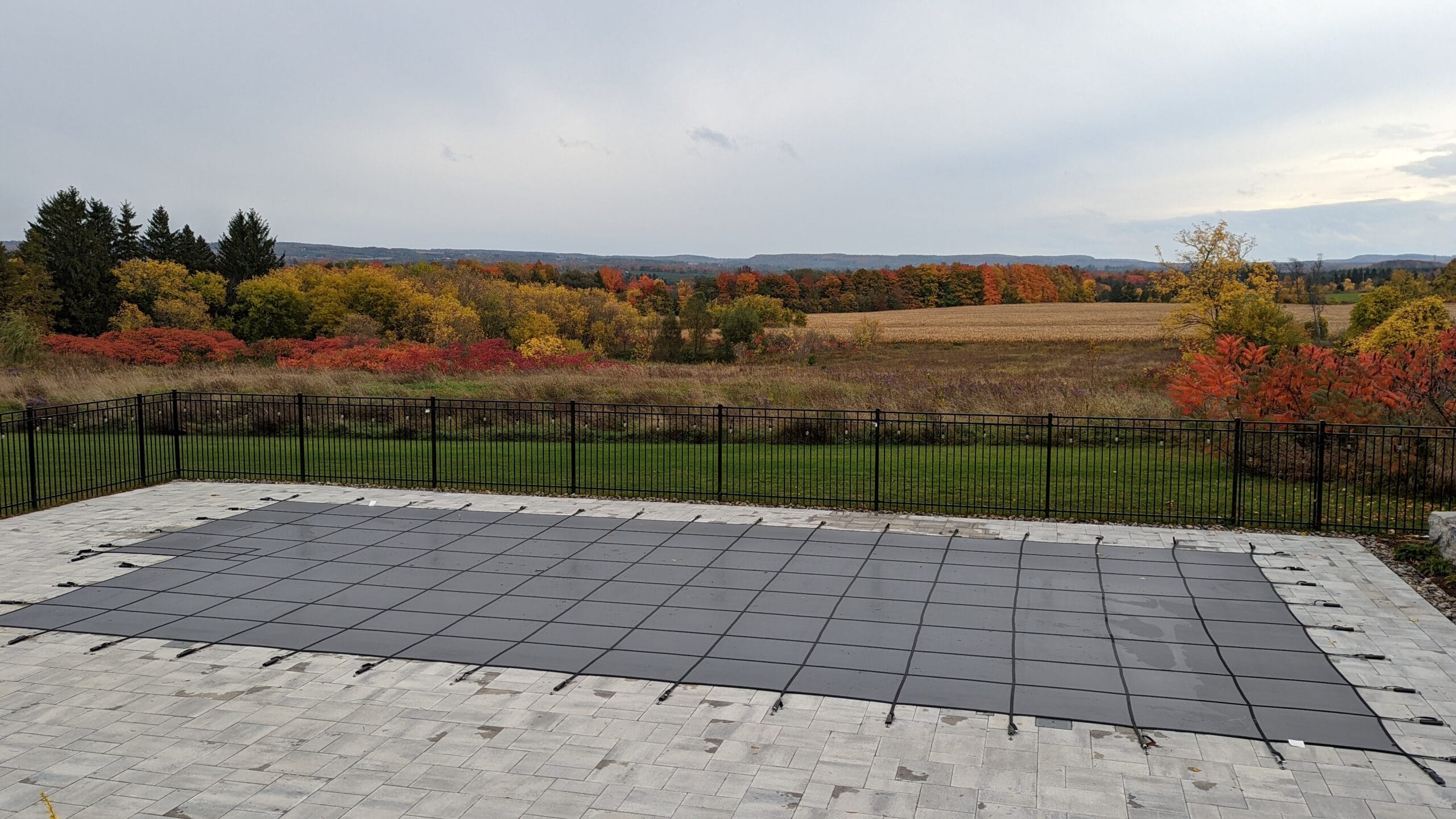
When it comes to swimming pool maintenance, choosing the right cover is crucial. The decision between a winter cover and a safety cover often depends on your specific needs, environment, and budget. Each type offers unique advantages, from protecting your pool during the off-season to ensuring safety for pets and children. This guide will help you compare the two options and determine which is best for your pool.
Understanding the Importance of Pool Covers
Why Are Pool Covers Essential?
Pool covers serve critical functions, such as protecting the pool from debris, reducing water evaporation, inhibiting algae growth, and ensuring safety. They minimize maintenance efforts, extend the lifespan of your pool, and enhance energy efficiency. A well-selected pool cover is a long-term investment that keeps your pool in top condition year-round.
How Do Pool Covers Aid Maintenance?
By shielding your pool from external elements, covers reduce cleaning requirements, limit algae formation, and help maintain water temperature. This reduces chemical usage, equipment strain, and energy costs, making pool maintenance more manageable.
Comparing Winter Covers and Safety Covers
What Are Winter Pool Covers?
Winter covers are designed to protect pools during colder months. They are non-permeable, preventing debris and sunlight from entering the pool while retaining some heat. Although cost-effective, they may require a cover pump to remove accumulated water and have a shorter lifespan compared to safety covers.
What Are Safety Pool Covers?
Safety covers are designed to prevent accidental entry into the pool, providing a secure barrier for children, pets, and wildlife. Constructed from durable materials such as mesh or reinforced vinyl, they also block debris and sunlight while offering a longer lifespan. Safety covers generally require professional installation to ensure optimal functionality.
Key Differences Between Winter and Safety Covers
Winter covers are more affordable and easier to install but may need frequent replacement and additional care, like water removal. Safety covers, while more expensive, are highly durable, visually appealing, and offer added safety and legal compliance advantages. The best choice depends on your priorities and pool usage.
Benefits of Winter Covers
Protection Against Debris
Winter covers create a non-permeable shield over your pool, keeping out leaves, twigs, and other debris. This reduces cleaning needs and helps maintain water clarity.
Algae Growth Prevention
By blocking sunlight, winter covers inhibit algae growth, reducing the need for chemical treatments and promoting a cleaner pool environment.
Heat Retention
Winter covers retain some pool heat, slowing down temperature loss during cooler months. This can extend the swimming season and lower heating costs.
Ease of Installation and Maintenance
Winter covers are relatively simple to install and remove. However, proper care, such as using a cover pump and storing the cover safely during summer, is necessary to extend its lifespan.
Benefits of Safety Covers
Enhanced Safety
Safety covers prevent accidental pool access, providing peace of mind for families with children or pets. They create a secure barrier, reducing the risk of accidents.
Superior Durability
Constructed from robust materials, safety covers offer a longer lifespan and better resistance to wear and tear. Their durability makes them a cost-effective choice over time.
Algae and Debris Control
Like winter covers, safety covers block sunlight and prevent debris from entering the pool. Their snug fit further enhances effectiveness in maintaining water cleanliness.
Professional Installation for Optimal Performance
Proper installation by professionals ensures a secure fit and maximizes the cover’s safety and durability features. This reduces the likelihood of issues or malfunctions.
Factors to Consider When Choosing a Cover
Cost Considerations
Winter covers are less expensive initially, but safety covers’ durability may make them more economical in the long term. Compare total ownership costs, including installation, maintenance, and replacement, when making your decision.
Weather Resistance
Safety covers are better suited for areas with harsh weather conditions, as they can withstand heavy snow, wind, and debris. Winter covers may require additional maintenance to handle similar challenges.
Maintenance Requirements
Winter covers often need a cover pump for water removal, while safety covers typically require less ongoing maintenance. Regular inspections and timely repairs can extend the lifespan of both types.
Pool Environment
Consider your pool’s surroundings, such as nearby trees or frequent wildlife visits. A safety cover might provide better protection in environments with more debris or higher safety risks.
Conclusion: Which Pool Cover Is Best for You?
The choice between a winter cover and a safety cover depends on your specific needs and priorities. Winter covers offer affordability and ease of use, while safety covers provide superior durability and enhanced safety features. Evaluate your pool environment, usage patterns, and budget to determine the best fit for your pool.